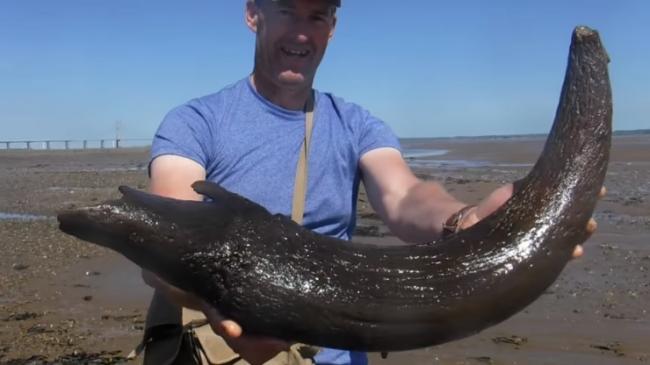FISHERMEN from the Black Rock Lave Net Heritage Fishery made an incredible discovery on the bed of the Severn estuary.
It’s not everyday you come across a giant horn from an extinct animal buried in the sand of the Severn estuary – but, that’s exactly what happened when two fishermen went out walking there on Tuesday.
Brothers Martin and Richard Morgan, who carry out lave net fishing – a traditional method of fishing using a large ‘Y’ shaped net in river estuaries – were out inspecting the area at low tide when they made the incredible discovery.
After initially mistaking the horn for a piece of wood wedged into a sandbank, they soon discovered it actually belonged to a breed of giant wild cattle called aurochs, which became extinct in the 17th Century.
The wild grazing cattle were thought to stand at around 2m tall (6ft), and for thousands of years were one of the largest land mammals in Europe.
A number of their horns – which can reach to around 80cm in size – have been found washed up on beaches and river banks across Britain, including Dinas Dinlle beach in Gwynedd, Bexhill beach in East Sussex and the River Ure in Wensleydale.
“This is our fishing grounds, we fish on the Severn estuary – it’s the point of the second greatest tidal range in the world,” explained Martin, from Undy near Caldicot.
“At low tide, we’re able to walk out onto our fishing grounds and even though it’s not the lave net fishing season at the moment, we spend quite a lot of time out here keeping an eye on things – a bit of bait gathering and keeping an eye out for poachers.
“We don’t usually look out for stuff in the summer time, but we had a bit of unusual weather last week, with high winds, so we thought we’d have a wander out there.”
Martin and Richard – who are part of the Black Rock Lave Net Heritage Fishery – have walked the route dozens of times, and had wandered a couple of miles off shore when they made the discovery.
“The storms last week had moved a sand bank and running water had created a new gully, so this must have exposed the auroch’s horn – just the back end of it,” said Martin.
“My brother had a good idea what it was. I thought it might have been a piece of wood or a maybe a bit of bone. But, when he got down close to it, he could see it resembled part of a horn.”
“We dug it out and there it was.
“We didn’t realise how big it was going to be. It’s a couple of feet long and quite heavy and solid. We’ve found a few vertebrae of aurochs before and a few small bones, but nothing on this scale.
“This is of great significance. You just don’t find stuff like that out there.”








